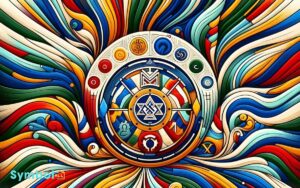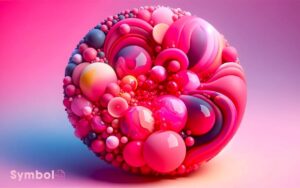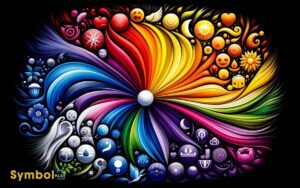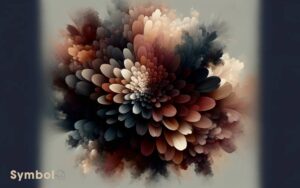What Does Color Blue Symbolize? An Insight Guide!
You’ve seen blue’s calm waves and expansive skies, but have you pondered its deeper meanings? Historically, blue symbolized divinity, power, and wealth, from ancient Egypt’s adoration for lapis lazuli to medieval European nobility.
Today, it evokes serenity, fostering calm and reducing stress, while its association with trust makes it a favorite in branding. Yet, blue also carries a tinge of sadness and melancholy, inviting reflective introspection.
Cultures worldwide view blue as a symbol of stability, freedom, and inspiration, bridging earthly and divine domains.
There’s a universe in the color blue, each hue whispering different tales of emotion, intellect, and spirit.
Setting out on this journey offers a glimpse into blue’s boundless depths and myriad interpretations.
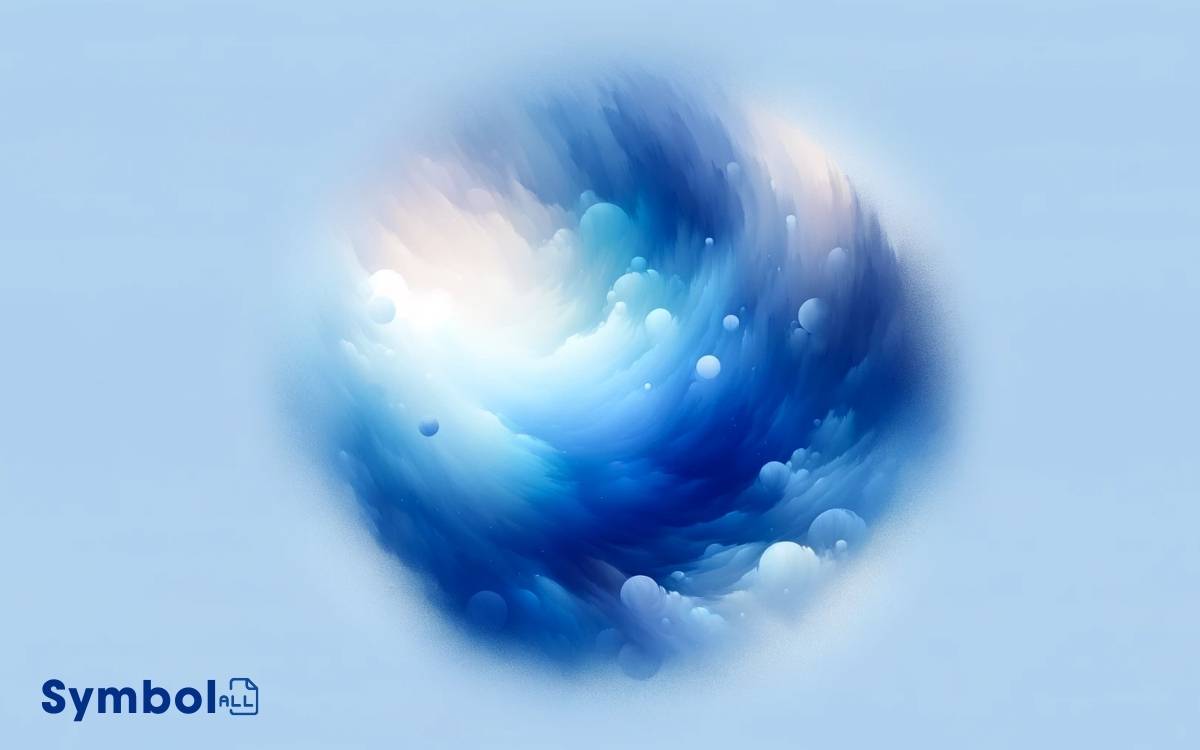
Key Takeaway
Historical Significance
Tracing back through centuries, blue’s significance has deeply permeated various cultures, symbolizing everything from divinity and serenity to wealth and power.
You’ll find that in ancient Egypt, lapis lazuli, a deep blue semi-precious stone, was revered, embodying the very heavens and adorning the pharaohs’ tombs to guide them in the afterlife.
In medieval Europe, blue dyes were prohibitively expensive, reserved for the nobility and the wealthy, denoting status and authority.
This color’s historical journey illustrates not just a preference but a complex web of meanings. It’s fascinating to see how blue’s symbolism evolved, from sacred associations in the past to its embrace across various domains today, retaining a vestige of its majestic and divine roots.
Calmness and Serenity
You’ll find that the color blue plays a pivotal role in fostering a sense of calmness and serenity, particularly through its application in stress reduction techniques and enhancing sleep quality.
Its hues are often utilized in environments designed to soothe and relax, as they can markedly lower heart rate and reduce agitation.
This aspect not only enriches our understanding of blue’s psychological effects but also emphasizes its therapeutic potential in creating serene spaces.
Stress Reduction Techniques
Incorporating the color blue into one’s environment can greatly reduce stress levels, fostering a sense of calmness and serenity.
Research indicates that blue hues have a profound impact on the mind, promoting mental clarity and reducing psychological stress.
This effect is attributed to blue’s association with natural elements like the sky and ocean, which evoke feelings of tranquility.
By integrating blue into workspaces or living areas, through decor or lighting, you can create an oasis of peace that counteracts the daily pressures of life.
Analytically, understanding the psychological underpinnings of this phenomenon is crucial. Blue’s wavelength has a calming effect on the brain, encouraging relaxation.
Hence, strategically using blue can be an effective technique in stress management, promoting an environment conducive to mental well-being.
Enhancing Sleep Quality
Expanding on the calming effects of the color blue, it’s worth investigating how this hue can greatly improve sleep quality by creating an environment of peace and tranquility.
When you incorporate blue into your sleeping area, you’re not just decorating; you’re engineering a sanctuary that beckons restful slumber.
- Promotes relaxation: Blue lowers heart rate and reduces blood pressure, preparing your body for sleep.
- Reduces mental clutter: It helps clear your mind, making it easier to fall asleep.
- Stimulates feelings of safety: Blue’s association with stability fosters a secure atmosphere conducive to sleep.
- Enhances sleep depth: Surrounding yourself with blue can increase the quality of REM sleep, ensuring you wake up rejuvenated.
In essence, the color blue doesn’t just symbolize calmness; it actively cultivates it, especially in the domain of sleep.
Trust and Security
The color blue’s association with trust and security resonates deeply in both historical contexts and contemporary symbolism.
You’ll find that various cultures have long embraced blue as a harbinger of reliability and safety. This isn’t merely a demonstration of choice; there’s a profound psychological underpinning to it.
Blue, unlike more aggressive hues, promotes a sense of calmness and serenity, qualities inherently linked to trustworthiness.
Financial institutions and tech companies frequently employ blue in their branding to evoke a sense of dependability and integrity.
This strategic choice taps into our innate responses to color, leveraging blue’s soothing effect to cultivate a relationship built on trust.
It’s a reflection of how color psychology is wielded to foster a secure connection between entities and individuals.
Depth and Stability
Delving into the symbolism of blue reveals its profound connection to depth and stability, underscoring how this hue embodies qualities of strength and reliability.
When you consider its presence in nature the vastness of the ocean and the infinity of the sky it’s clear that blue symbolizes a boundless depth.
This color invokes a sense of calm and solidity, making it a cornerstone in contexts that require trust and dependability.
- Blue’s association with the ocean suggests an unfathomable depth of wisdom and insight.
- The clear sky, often depicted in shades of blue, symbolizes limitless possibilities and a stable foundation for growth.
- In design, blue provides a backdrop of serenity, encouraging focus and clear thought.
- Culturally, blue has been a symbol of steadfastness, representing a reliable and unwavering force.
This analytical lens offers a deeper understanding of blue’s symbolic richness, connecting you to its essence of depth and stability.
Sadness and Melancholy
In exploring the multifaceted symbolism of blue, it’s important to acknowledge its profound association with sadness and melancholy, emotions universally recognized for their depth and introspection.
This connection isn’t merely cultural; it’s deeply rooted in our collective consciousness, inviting a contemplative state that mirrors the vastness and depth of the sea and sky.
| Emotion | Color | Effect |
|---|---|---|
| Sadness | Blue | Invokes a sense of calm, reflective introspection |
| Melancholy | Blue | Encourages deep, contemplative thought |
| Solitude | Blue | Fosters a peaceful state of being alone |
| Reflection | Blue | Stimulates introspective and thoughtful engagement |
This table underscores the complex emotional landscape blue navigates. Its ability to evoke a serene, meditative state makes it unique in the spectrum, illustrating its power to both soothe and stir the human spirit.
Creativity and Inspiration
Moving beyond its association with sadness and introspection, blue also harbors a dynamic capacity to spark creativity and inspire innovation.
This color, often associated with the vastness of the sky and the depth of the sea, encourages you to look beyond the surface and explore new possibilities.
Its calming presence fosters a tranquil environment where your mind is free to wander and conceive original ideas.
- Enhances Focus: Blue’s soothing nature helps concentrate your thoughts.
- Encourages Exploration: Reminds you of the infinite sky and deep oceans, inviting curiosity.
- Stimulates Imagination: Evokes a sense of wonder and the potential for new creations.
- Promotes Calmness: Creates a serene backdrop against which your creativity can flourish.
These attributes make blue a uniquely powerful catalyst in the domain of creative endeavors and innovative thinking.
Symbol of Freedom
Beyond its calming effects, blue also symbolizes freedom, offering you a visual expanse that suggests limitless possibilities and an open sky ahead.
This hue encourages you to break free from constraints, pushing the boundaries of your own limitations. It’s a color that represents the vast, unexplored depths of oceans and the boundless heights of the atmosphere, both embodying the essence of liberation.
Analyzing blue within this framework reveals a deep, intrinsic motivation towards achieving a state of unbridled freedom.
| Aspect | Symbolism | Implication |
|---|---|---|
| Open Sky | Limitlessness | Endless possibilities |
| Oceans | Depth & Exploration | Unfathomable freedom |
| Horizon | Boundary-less Vision | Future without confines |
| Bird in Flight | Unrestricted Movement | Ultimate liberation |
In essence, blue is not just a color; it’s a journey towards the infinite, inviting you to soar beyond the visible confines of your current reality.
Cultural Interpretations
You’ll find that across different cultures, blue often symbolizes serenity, reflecting a universal yearning for peace and calm.
Its religious significance can’t be understated, as it’s woven into the fabric of numerous spiritual traditions and rites.
This hue’s ability to bridge diverse cultural beliefs highlights its profound impact on human perception and values.
Serenity in Various Cultures
Across various cultures, blue symbolizes serenity, embodying a tranquil essence that resonates deeply within societal values and spiritual beliefs.
This color’s calming influence isn’t just a superficial preference but a profound representation that spans across the globe, reflecting a universal yearning for peace and harmony.
Consider these aspects:
- In Japanese culture, blue signifies stability and reliability, echoing the calmness of the sea and sky.
- Mediterranean societies often paint their doorways blue to ward off evil spirits, seeking protection through serenity.
- Native American traditions associate blue with healing and spiritual guidance, highlighting its soothing properties.
- Scandinavian designs frequently incorporate blue tones to create a serene and inviting atmosphere, embodying a peaceful aesthetic.
These examples illustrate blue’s unique ability to transcend cultural boundaries, offering a universally appreciated vision of tranquility and calm.
Blues Religious Significance
Delving into the color blue’s religious significance reveals its deep-seated role in embodying divine attributes and facilitating spiritual connections across various faiths.
- In Christianity, blue is often associated with the Virgin Mary, symbolizing truth and purity.
- Similarly, in Hinduism, Lord Krishna is depicted with blue skin, representing infinite, all-encompassing divinity.
- Judaism employs blue in the tallit, the prayer shawl, signifying the sky and by extension, the presence of God.
This pervasive use of blue underscores its capacity to transcend mere aesthetics, embodying instead a profound spiritual depth.
It’s as if blue bridges the gap between the earthly and the divine, offering a visual reminder of the sacred that permeates different cultures and beliefs.
Psychological Effects
The color blue exerts a profound psychological impact, influencing emotions and mood in diverse ways.
When you’re surrounded by blue, it’s not just a visual experience; it’s a thorough exploration into the psyche, where the hues play with your emotions subtly yet meaningfully.
Analyzing this impact reveals:
- Blue often instills a sense of calmness and serenity, acting as a balm for the mind.
- It can enhance productivity and focus, making it a favorite in workspaces.
- Conversely, darker shades might evoke feelings of sadness or introspection.
- Blue’s association with stability and reliability can foster trust and security.
Understanding these effects allows you to appreciate how this color shapes your psychological landscape, extending beyond mere aesthetics to influence your daily emotional experiences.
Variations in Meaning
You’ll find that the symbolism of blue isn’t static across different cultures and emotional landscapes.
Cultural interpretations greatly shape how you perceive its meaning, from serenity in one society to mourning in another.
Similarly, your emotional associations with blue can range widely, from feelings of calm to sadness, highlighting its complex symbolism.
Cultural Interpretations
Across cultures, blue’s symbolism embodies a vast spectrum of meanings, reflecting diverse historical, geographical, and social influences.
This color’s interpretation varies substantially based on cultural contexts, offering an insightful lens through which to explore societal values and beliefs.
- In Western cultures, blue often symbolizes trust, serenity, and stability, frequently associated with corporate identities.
- In many Middle Eastern countries, blue represents protection, warding off the evil eye.
- In China, blue is associated with immortality and advancement, reflecting in its presence within traditional art.
- For the Hindu religion, blue is the color of Krishna, symbolizing divine joy and love.
These variations in meaning underscore the complexity of cultural interpretations, illustrating how color symbolism transcends mere aesthetic considerations to embody deeply ingrained cultural narratives and philosophies.
Emotional Associations
Beyond mere perception, blue’s emotional resonance varies considerably, reflecting deep-seated psychological and cultural influences.
You’ll find that its spectrum spans from tranquility to melancholy, embodying a duality that’s rare in the color world.
This variation isn’t accidental. It’s intricately tied to how humans have historically related to the environments and concepts blue often represents—sky and sea, stability and depth.
Analyzing blue’s emotional impact, you discern patterns: lighter shades tend to uplift, symbolizing calm and serenity, while darker hues can evoke depth, sometimes tipping into sadness.
This dual nature underscores blue’s complexity, suggesting that your emotional response might hinge on the specific shade you’re encountering.
It’s a reflection of blue’s profound ability to mirror the depth of human emotions, resonating on a uniquely personal level.
Conclusion
To sum up, you’ve journeyed through the multifaceted symbolisms of blue, from its historical roots to its emotional landscape.
Like an ocean’s depth that holds mysteries beneath its surface, blue embodies a spectrum of meanings—calmness, trust, depth, and occasionally, melancholy.
Across cultures, it paints a picture of stability and freedom, stirring a universal sentiment. Its psychological impact, varying yet profound, mirrors the complexity of human emotions. As a result, blue stands as a proof to the intricate tapestry of human experience.

